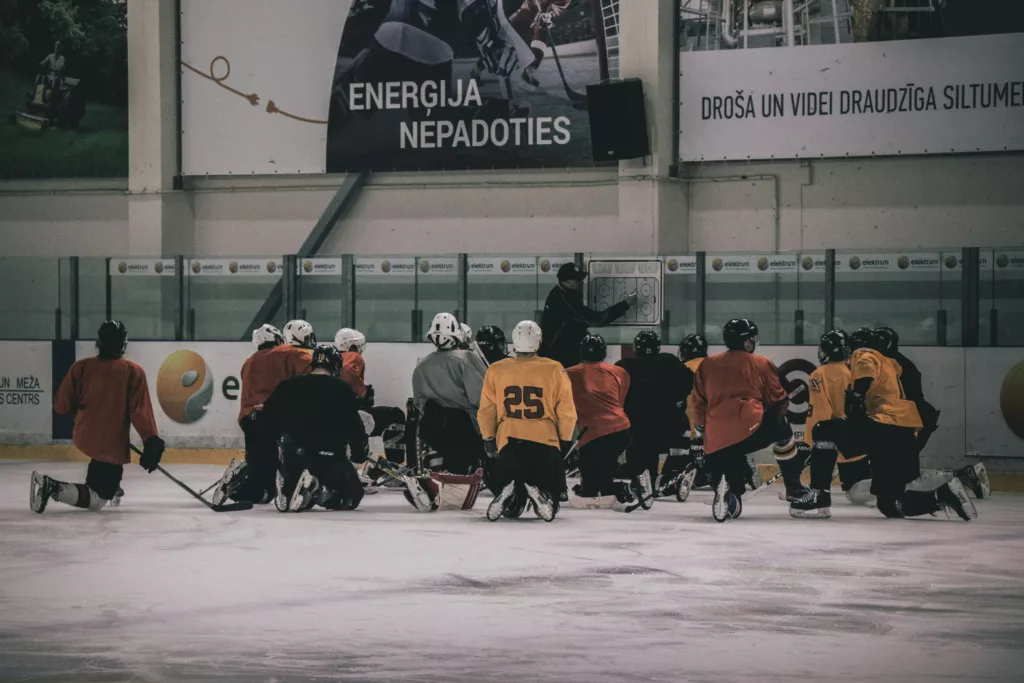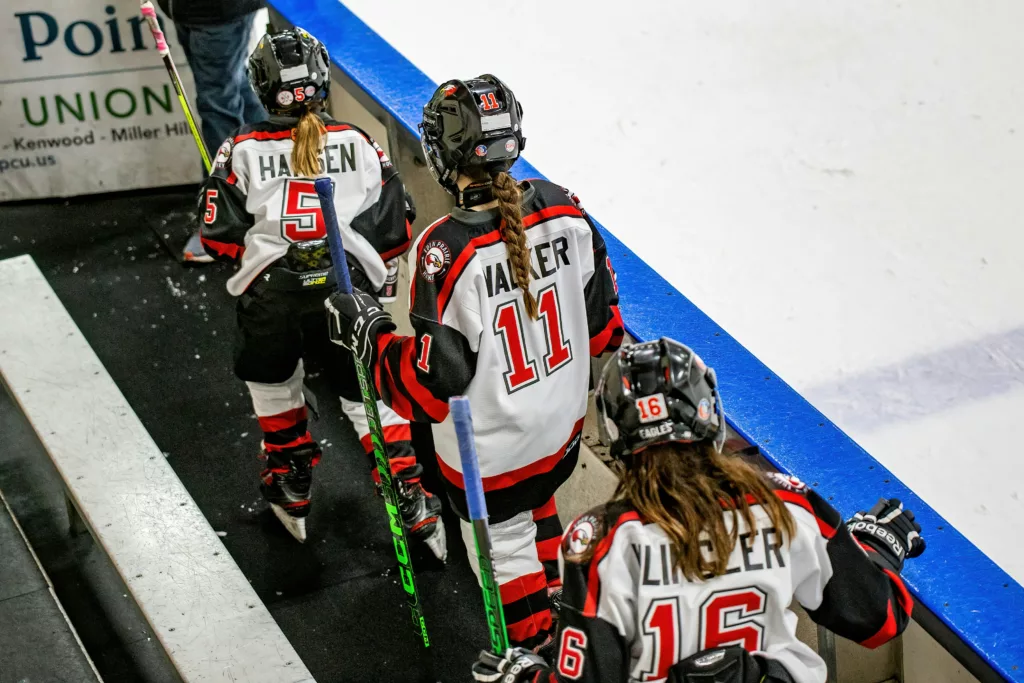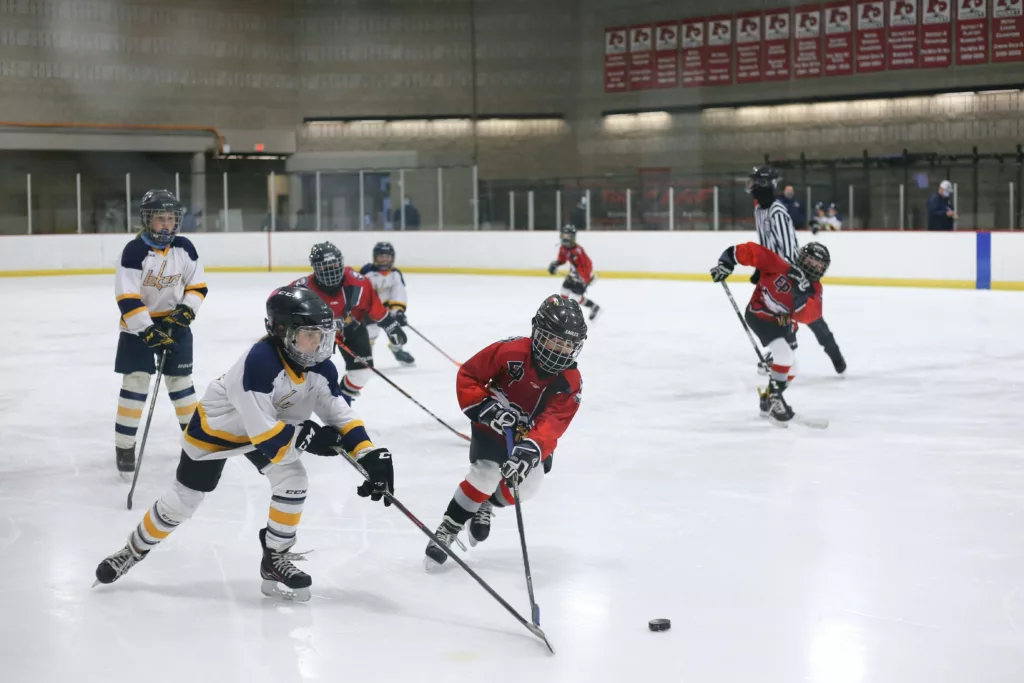
The Dollars and Sense of Hockey Parenting
Hockey parenting is an investment that goes beyond the ice rink, demanding both financial and time commitments from families. Hockey, in particular, is known for being an expensive sport, especially when compared to other youth activities. From purchasing essential gear like skates, pads, and sticks to paying for ice time and specialized training sessions, the costs can quickly add up. Additionally, there are always new products on the market, such as light-up shooting targets and advanced hockey net targets, which promise to enhance practice but also add to the expense.
Parents often find themselves juggling their finances and schedules to support their child’s passion for hockey. The scramble to afford youth hockey involves not only budgeting for equipment but also covering travel expenses for games and tournaments, which can span across regions. Time is another precious resource that parents must manage carefully, balancing work, family obligations, and countless hours at the rink. Despite these challenges, many parents believe that the benefits of hockey—such as teamwork, discipline, and physical fitness—far outweigh the sacrifices.
The key to successful hockey parenting lies in being smart about spending. Investing in quality hockey training equipment, such as durable hockey shots aids and reliable practice gear, can provide long-term savings and improve your child’s skills. By planning and prioritizing expenses, parents can ensure that their young athletes receive the best possible support without breaking the bank. Ultimately, thoughtful financial planning can help families navigate the economic challenges of hockey parenting, allowing them to focus on the joy and growth the sport brings.
How Much Does It Cost to Be a Hockey Parent?
Hockey parenting involves significant financial commitments, making it one of the more expensive youth sports. On average, a family in the United States spends $693 annually per child for participation in one sport. However, for children playing ice hockey, families typically pay around $2,583 per year. This stark discrepancy highlights why hockey remains a relatively niche sport; it’s challenging for many parents to justify these high expenses.
Moreover, paying the average amount doesn’t necessarily guarantee success or elite-level training. A survey revealed that about 58% of parents reported spending more than $5,000 CAD, or approximately $4,200 USD, each year on their child’s hockey endeavors. This substantial investment includes not only the basics but also specialized hockey training equipment, such as light-up shooting targets and advanced hockey net targets designed to enhance performance during practice.
The high costs associated with hockey can be attributed to several factors. Training sessions with professional coaches, regular ice time rentals, travel expenses for games and tournaments, and the constant need for new and improved equipment all contribute to the overall expenditure. Parents need to be strategic and mindful of their spending to ensure their young athletes can pursue their passion for hockey without breaking the bank. By investing in quality hockey shots aids and other reliable practice gear, families can potentially save money in the long run while providing the best support for their children’s development in the sport.

Comparing the Costs of Youth Sports: How Hockey Stacks Up
The average annual family spending on playing one sport for one child in the United States in 2019 was $693. This amount includes various expenses: $125 for registration, $144 for equipment, $196 for travel, $134 for lessons, and $81 for camps. However, the actual costs can vary significantly depending on the sport.
For instance, sports like athletics, soccer, and basketball are relatively affordable. These sports often have lower equipment costs and more local opportunities, making them accessible and popular choices for many families. The minimal expenses required for basic gear and the widespread availability of local leagues and courts contribute to their affordability.
In contrast, sports like hockey incur much higher costs due to the need for specialized equipment and facilities. This financial barrier makes hockey less accessible and more of a niche sport. The high costs of hockey training equipment, travel for games and tournaments, and regular ice time rentals can quickly add up, making it a more significant financial commitment for families compared to other sports. Understanding these cost differences can help parents make informed decisions about their children’s involvement in sports, balancing their passion and financial considerations.
Balancing Act: What Hockey Parents Spend on Everything
The average annual family spending on playing ice hockey for one child in the US was $2,583 in 2019, which is more than four times the average cost of other sports. This substantial financial commitment breaks down into several key categories, highlighting the areas where hockey parents are most burdened.
Travel expenses, at $829 annually, represent the greatest portion of the total cost. This figure is even higher for families in remote regions of North America, where games and practices are more spread out, necessitating longer and more frequent trips. Registration fees add another $634 to the yearly expenses, reflecting the high cost of participating in leagues and competitions.
Equipment costs, which can be as high as $389 annually, include essential items such as skates, pads, sticks, and other gear. Lessons, often necessary for skill development and advancement, account for another $389 per year. Finally, hockey camps, which provide intensive training and development opportunities, add $302 to the annual expenditure.
With such significant costs, it’s no wonder that hockey parents are constantly looking for ways to save money. From seeking out discounts on hockey training equipment like light-up shooting targets and reliable practice gear to carefully planning travel and budgeting for registration fees, parents must be strategic to manage the financial demands of supporting their young athletes.

Tradeoffs and Sacrifices: What Hockey Parents Give Up
Parents are forced to make sacrifices for their children every day. That’s not something out of the ordinary. Still, hockey parents face unique challenges as they support their young athletes through early morning practices, long road trips, and countless hours at cold rinks. These efforts are made with pleasure and pride, but there are also tangible sacrifices they make to keep their children playing hockey.
A 2019 survey of North American parents revealed the most common tradeoffs they make for youth hockey funding. Notably, 67% of parents reported taking fewer vacations, and 63% cut back on household items such as groceries and entertainment. Additionally, 35% of parents took on more personal debt to cover hockey expenses, while 23% got a second job or worked overtime.
Other sacrifices include delaying retirement plans, selling personal possessions, and borrowing from family members. Some parents even cut back on money set aside for their child’s education or downsized to a smaller house to make ends meet. These sacrifices underscore the significant financial burden of hockey parenting and highlight the dedication and commitment required to support a child’s passion for the sport.
Funding Hockey Parenting: Bottle Drives and Christmas Parties
Supporting a child’s hockey aspirations can be financially challenging, but there are numerous creative ways to raise money and alleviate some of the burden. Here are some effective fundraising ideas that hockey parents can consider:
- Bottle Drives: Collect recyclable bottles and cans from the community and turn them in for cash.
- Community BBQs: Host a BBQ, sell tickets, and offer food and games to raise funds.
- Car Washes: Set up a car wash station in a busy area and attract customers.
- Selling Chocolate or Candies: Sell chocolate bars or candies door-to-door or at local events.
- Hosting Bingo Tournaments: Organize a bingo night with entry fees and prizes.
- Looking for Jersey Sponsors: Secure sponsorships from local businesses in exchange for advertising.
- Bake Sales: Bake and sell treats at local events, schools, or community centers.
By incorporating these fundraising activities, hockey parents can generate the necessary funds to support their children’s passion for the sport without bearing the entire financial burden alone.

The Payoff: Why Hockey Parenting Rocks
While the costs and sacrifices of hockey parenting are significant, the benefits make it all worthwhile. According to parents in North America in 2019, the most common benefits of youth hockey include teaching the value of teamwork, providing an opportunity to stay active, learning to win and lose gracefully, positively impacting grades, potentially leading to a university scholarship, and even the chance of pursuing an NHL career.
But there are also valuable benefits for the parents themselves, such as:
- Encouraging Personal Development: Watching your child develop skills, confidence, and resilience through hockey is immensely rewarding.
- Promoting Health and Fitness: Encouraging a healthy, active lifestyle that can last a lifetime.
- Setting a Strong Example: Demonstrating commitment, discipline, and support, setting a powerful example for your child.
- Building a Support Network: Forming strong bonds with other families and becoming part of a supportive hockey community.
- Sharing Joy and Excitement: Enjoying the thrill of the game together, fostering a shared love for the sport.
- Boosting Child Empowerment: Helping your child achieve their goals and dreams, building their self-esteem and independence.
Hockey Parenting: Always Worth It!
When it comes to being a hockey parent, it’s clear that you’re in for an expensive journey. However, the important part is to keep the positives in mind. The sacrifices and investments you make can lead to lifelong benefits for your child, from personal growth and fitness to valuable life lessons and potential opportunities.
Remember, this journey is not just about the financial costs but about the experiences and memories you create along the way. By being strategic and smart about how you spend your money, you can support your child’s passion for hockey without breaking the bank.
Take advantage of fundraising opportunities, look for quality but affordable hockey training equipment, and always prioritize the overall well-being and happiness of your young athlete. Embrace the challenges and joys of hockey parenting, knowing that your efforts are paving the way for a rewarding future.
When it comes to making hockey training economical, there’s no better choice for hockey shooting targets than Snipe Lights. Guaranteed to last, lightweight and easily portable, and fully interactive with 12 game modes and progress trackers to keep you engaged and interested. Learn more by reading about the best hockey goal targets and tarps. Or, check out our YouTube channel @snipelights